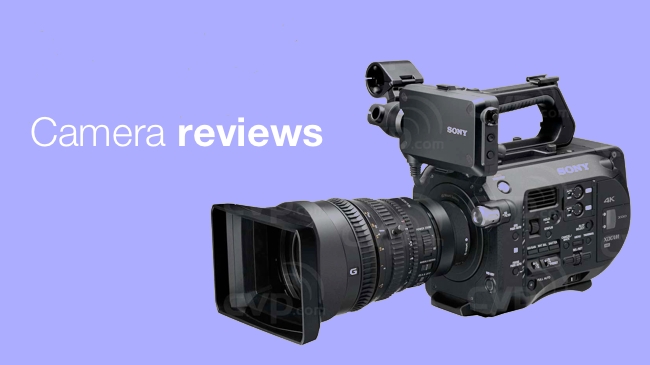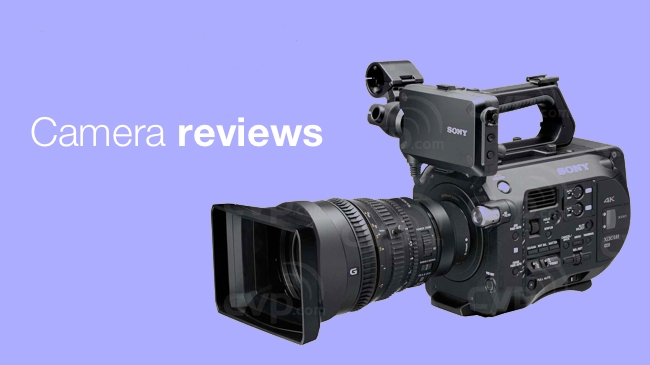
 Sony FS7
Sony FS7
Replay: In our article How should we test cameras? we asked what was better: unblinking scientific testing or judging on the perceived quality of the image, and we discussed some of the issues surrounding camera evaluations. But we thought it was only right to get the perspective from the people on the front-end doing the reviews themselves. Here, Phil Rhodes talks about objectivity vs subjectivity.
We could dismiss the subject of picture evaluation in a single phrase. Arguments that higher resolution or higher dynamic range or more accurate colour are somehow objectively better fall in the face of certain uncomfortable realities: few people really wanted the higher framerate of The Hobbit or the stereoscopy of Clash of the Titans for instance, even though temporal resolution, or stereo vision, is objectively better, objectively more information, objectively a more realistic representation of reality. Reality is boring. The storylines represented in filmmaking are often in at least some ways beyond the normal experience and there's no reason that the visuals shouldn't be, either.
But that's a simplistic argument, almost to the point of extremism. There is wide agreement that certain characteristics of an image are negative. This might be because we have become habituated to their absence by prior art, or because they offend something more fundamental about human neuro-visual biology. Either way, if the purpose of cinematography is to create images that are acceptable to an audience, that distinction is irrelevant. People expect things to look a certain way. OK, there's an argument to be had about whether cinematographers should aim to follow a fashion or attempt to redefine it, but inevitably the answer is a bit of both. The relevance of the equipment to this is therefore whether it allows a cinematographer to execute his or her intent for this production. There's an opinion involved, but it isn't yours or mine, at least not in the general case.
The cinematographer on a particular production has, after all, been hired for that opinion. It's for this reason that directors of photography become frustrated with the desires of a production to impose a camera on them: expressing approval of someone's technique, then attempting to dictate that technique is, at best, illogical. Possibly the only thing that prevents a debacle is that most high-end cameras can can execute more or less any reasonable cinematographic intent.
Objectivity vs subjectivity
So, is the quality of a camera system objective or subjective? Er, yes.
Subjectivity? Easy. Many cinematic productions shot on the Sony F900. Now-slightly-embarrassing literature of the early 2000s says of the F900 that “In a similar way to film, the HDW-F900 can handle a very impressive contrast range.” Sparing the blushes of the company upon whose website that gem still resides, the capability is of course not really describable as film-like. What's key, regardless, is that these were successful productions. They were produced and sold for money, if that's your metric. They were watched and enjoyed, if that's your metric. Some of them might even be art, if you're one of those people who require things to be high-minded if they're to be considered of value, but the point is that even deciding on a measure of success is far from straightforward.
We can make similar arguments for objectivity, though. It's foolish to contend better cameras don't make it easier to execute the cinematographer's intent, or more formally, to express that opinion that we discussed earlier. People value certain things not because those things produce intrinsically better pictures, but because it makes the ideal more accessible. Whether a clipped sky is better or worse than any other kind of sky is irrelevant; what we want is the choice. This at least establishes a division – with a huge grey area, but nonetheless – between those things which either expand or restrict our options.
Unintended technique
But is even this a point of universal agreement? After all, there are techniques in filmmaking which celebrate the unintended. Cross-processed reversal and hand cranking became associated with some extremely successful films directed by the late, great Tony Scott, who would have used those techniques in the full expectation of the unexpected. Nobody's building video cameras which produce that look – it can potentially be done with LUTs – but this, and a thousand less-extreme examples, stand as an indication of the futility behind putting an eyedropper on a skintone and expecting the numbers to have any absolute meaning.
So, we might pixel-peep cameras, and there's nothing wrong with that, but nobody evaluates a director of photography's demo reel based on the number of stops of dynamic range crammed into each shot. If that were worthwhile, someone would have produced a tool for estimating dynamic range based on the known photographic characteristics of objects in frame. Nobody's going to do that for cinematographers. I wonder why we rely on it so heavily, in this post-scarcity world, with cameras.
Further reading
How should we review cameras? Part two - Simon Wyndham's view
Tags: Production


Comments